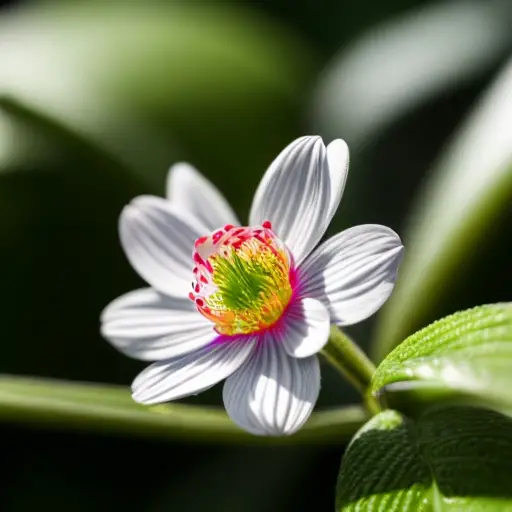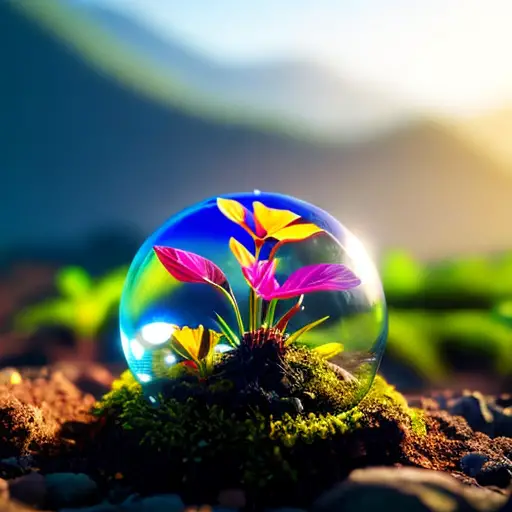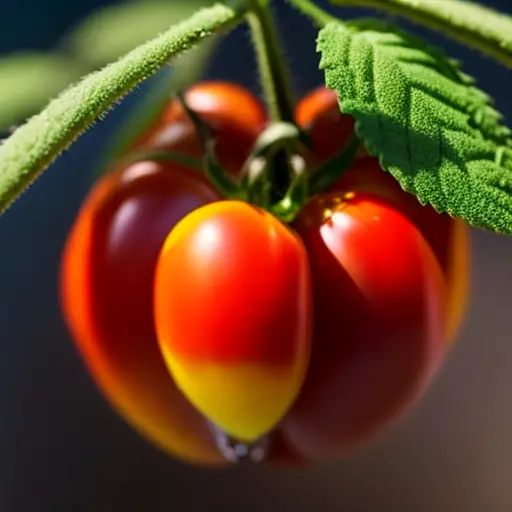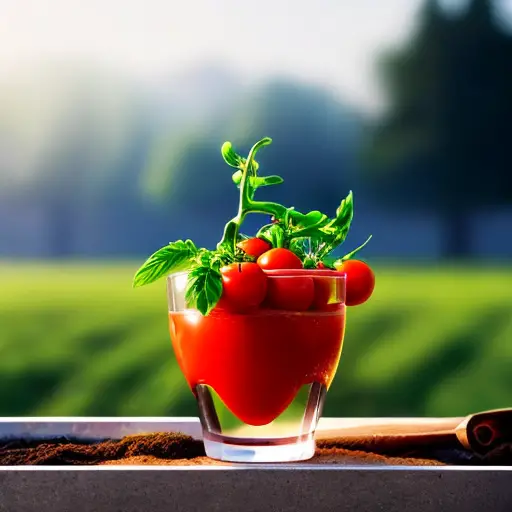Essential Components for Photosynthesis: A Closer Look
The Magic of Photosynthesis: Understanding the Basics
Put on your photosynthesizing aprons, folks, because we’re about to dive into the amazing world of plants and their magical ability to turn sunlight into sustenance! So, picture this: plants are like little green chefs, whipping up their own meals! But what do these culinary superheroes need to create their masterpiece known as photosynthesis? Well, it’s quite simple really. Besides a flair for fashion in shades of green, plants require three key ingredients: sunlight (preferably not filtered through a skyscraper), carbon dioxide (apparently plants breathe too, who knew?), and water (the life elixir for both you and your leafy companions). So, dear readers, next time you see a plant basking in the sun, know that it’s not just relaxing—it’s working hard in the kitchen, creating an absolute photosynthetic feast!
Sunlight – The Vital Ingredient for Plant Growth
One interesting fact about what plants need for photosynthesis is that while most plants require sunlight as the primary source of energy for photosynthesis, there are some unique plant species that have adapted to low-light environments and can still carry out photosynthesis using only small amounts of available light. These plants have evolved special light-harvesting structures or pigments that allow them to efficiently capture and utilize even the faintest sunlight, enabling them to thrive in conditions where other plants would struggle to survive.
You know what they say, plants are just like us: they need sunlight to survive and thrive! Yes, ladies and gentlemen, sunlight is the vital ingredient for plant growth, like a secret sauce to their leafy lives. Without it, plants would be like teenagers without the internet or pizza, lost and confused. You see, when plants catch those rays, they absorb the sunlight through a process called photosynthesis. It’s like their own version of a solar-powered energy drink, converting light energy into a tasty treat called glucose. So next time you see a sun-kissed plant enjoying its daily dose of sunshine, don’t interrupt, it’s busy sipping on its photogenic cocktail and becoming a photosynthesizing machine!
The Role of Water in Photosynthesis: Quenching the Thirst of Plants

Ah, photosynthesis! The magical process that turns sunlight into food for our leafy green friends. Now, let’s talk about the unsung hero of this incredible phenomenon – water. Yes, you heard it right. Water, my friends, plays a crucial role in quenching the thirst of plants for that perfect shot of photosynthetic rejuvenation.
You see, when it comes to photosynthesis, plants have their own version of a shopping list. Just like how we humans need our morning coffee to kick-start our day, plants need a little something extra to get their chlorophyll engines revving. And that little something extra is none other than water, the elixir of life.
Plants, like your demanding house cat, have their particular needs. And one of the most pressing needs is hydration. Water acts as the primary vehicle, transporting essential nutrients from the roots to the entire plant system. It’s like the world’s most efficient delivery service, shuttling goodies like minerals, sugars, and amino acids through the plant’s veins and vessels.
But water’s role in photosynthesis doesn’t end there; oh no, it’s just getting started. Once it’s pumped up the xylem highway and reached the leaves, water becomes the lifeblood that powers the plant’s leafy factories. It’s a bit like when that first sip of coffee hits your bloodstream, and suddenly your brain gets laser-focused. In this case, water activates chlorophyll, the plant’s superhero pigment that captures sunlight, and saves the day by transforming it into energy.
Now, forget about putting your plants on a treadmill because water is not only their trusty delivery driver but also their personal temperature regulator. Just like a built-in cooling system, water keeps the plants’ leaves at just the right temperature, allowing for optimal photosynthetic shenanigans. It helps them eliminate excess heat and keeps their delicate leafy cells from wilting under pressure.
But wait, there’s more! Water gets bonus points for its role in photosynthesis because it also serves as the central de-stressor for our green friends. When the sun is a bit too intense, and the plant starts feeling the heat, water swoops in like a superhero with a refreshing breeze, giving plants a well-deserved break. Through a process called transpiration, water exits the leaves, creating a cooling effect that leaves the plant feeling as fresh and invigorated as a dip in a pool on a hot summer’s day.
So, when we talk about what plants need for photosynthesis, we can’t forget water, the unsung hero that quenches their thirst and makes photosynthesis possible. From delivering nutrients to activating chlorophyll, regulating temperature, and even giving plants a breather, water wears many hats in this miraculous process. Next time you turn on the faucet, remember that water is not just a mere resource but a fundamental necessity for our leafy companions, helping them create the green wonderland we all admire. Now, excuse me while I go take a refreshing sip of water in tribute to our photosynthesizing pals!
Nutrients and the Journey from Soil to Leaf: Unveiling the Secrets of Plant Nutrition
A fun fact about what plants need for photosynthesis is that they can actually ‘see’ and respond to different colors of light. While humans see a limited range of colors as visible light, plants have specialized pigments, such as chlorophyll, that allow them to capture energy from different parts of the light spectrum. This is why plants appear green to us, as chlorophyll absorbs mainly red and blue light while reflecting green light back to our eyes. So, plants are not just passive entities absorbing sunlight, they are actively engaging with and utilizing different colors of light to carry out photosynthesis.
Ah, the mysterious journey of nutrients from the humble soil to the magnificent leaf – it’s like a botanical version of The Hobbit! Picture this: the soil, a bustling metropolis, where essential nutrients mingle and bustle, forming an underground community that makes New York City appear quiet. As these nutrients embark on their adventure, they face a perilous quest – to reach the leaf, that evergreen kingdom of photosynthesis. Along the way, they encounter the villainous weed, desperately trying to steal their spotlight. However, armed with sunshine, chlorophyll, and a green thumb, our leafy heroes absorb these nutrients to power their magical process of photosynthesis. So dear readers, next time you see a plant photosynthesizing, remember the epic tale that unfolds beneath the surface; for in the realm of nutrition, only the bravest of nutrients can make it to the leafy throne.







